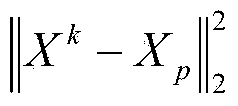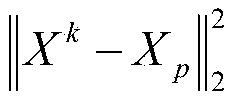PET image reconstructing method and device
An image and weight factor technology, applied in the field of medical image processing, can solve problems such as limited application scope, blurred image details, and low contrast.
- Summary
- Abstract
- Description
- Claims
- Application Information
AI Technical Summary
Problems solved by technology
Method used
Image
Examples
Embodiment 1
[0101] figure 1 is a schematic flow chart of the PET image reconstruction method provided by Embodiment 1 of the present invention. Such as figure 1 As shown, the reconstruction method includes the following steps:
[0102] S11. Obtain PET projection data Y:
[0103] It should be noted that the PET image reconstruction method provided by the embodiment of the present invention is applicable to the case where the acquired projection data Y is incomplete projection data. When the injection amount is insufficient or the acquisition time is shortened, the data acquired are incomplete projection data.
[0104] S12. Acquire an initial estimated image according to the PET projection data Y:
[0105]The PET projection data Y is reconstructed by using an analytical reconstruction algorithm commonly used in the field, such as the FBP algorithm, or by using a full-one matrix method to obtain an initial estimated image.
[0106] S13. Obtain an estimated target image according to the ...
Embodiment 2
[0135] It should be noted that Embodiment 2 has many similarities with Embodiment 1. In order to highlight the differences between Embodiment 2 and Embodiment 1, the embodiment of the present invention will focus on the differences. The similarities Please refer to the description of Embodiment 1.
[0136] In the embodiment of the present invention, in the process of solving the minimum solution of the objective function under the constraint condition of A·X=Y, the gradient descent method is preferably used to iteratively reconstruct the estimated target image.
[0137] When the gradient descent method is used to iteratively reconstruct the target estimated image, the iterative reconstruction formula is:
[0138] X new k = X k + α 1 · h 1 k · ∂ ...
Embodiment 3
[0153] It should be noted that the third embodiment is obtained by further improving the implementation of the PET image reconstruction method described in the second embodiment. Therefore, the third embodiment has many similarities with the second embodiment. In order to highlight the embodiment The differences between the third embodiment and the second embodiment, the embodiment of the present invention will focus on the differences, and for the similarities, please refer to the description of the second embodiment.
[0154] image 3 is a schematic flow chart of the PET image reconstruction method provided by Embodiment 3 of the present invention. Such as image 3 As shown, it specifically includes the following steps:
[0155] S31 to S33 are the same as steps S21 to S23 in the first embodiment, and for the sake of brevity, no detailed description is given here, and details are referred to corresponding descriptions in the first embodiment.
[0156] S34. Based on adaptiv...
PUM
 Login to View More
Login to View More Abstract
Description
Claims
Application Information
 Login to View More
Login to View More - R&D
- Intellectual Property
- Life Sciences
- Materials
- Tech Scout
- Unparalleled Data Quality
- Higher Quality Content
- 60% Fewer Hallucinations
Browse by: Latest US Patents, China's latest patents, Technical Efficacy Thesaurus, Application Domain, Technology Topic, Popular Technical Reports.
© 2025 PatSnap. All rights reserved.Legal|Privacy policy|Modern Slavery Act Transparency Statement|Sitemap|About US| Contact US: help@patsnap.com



